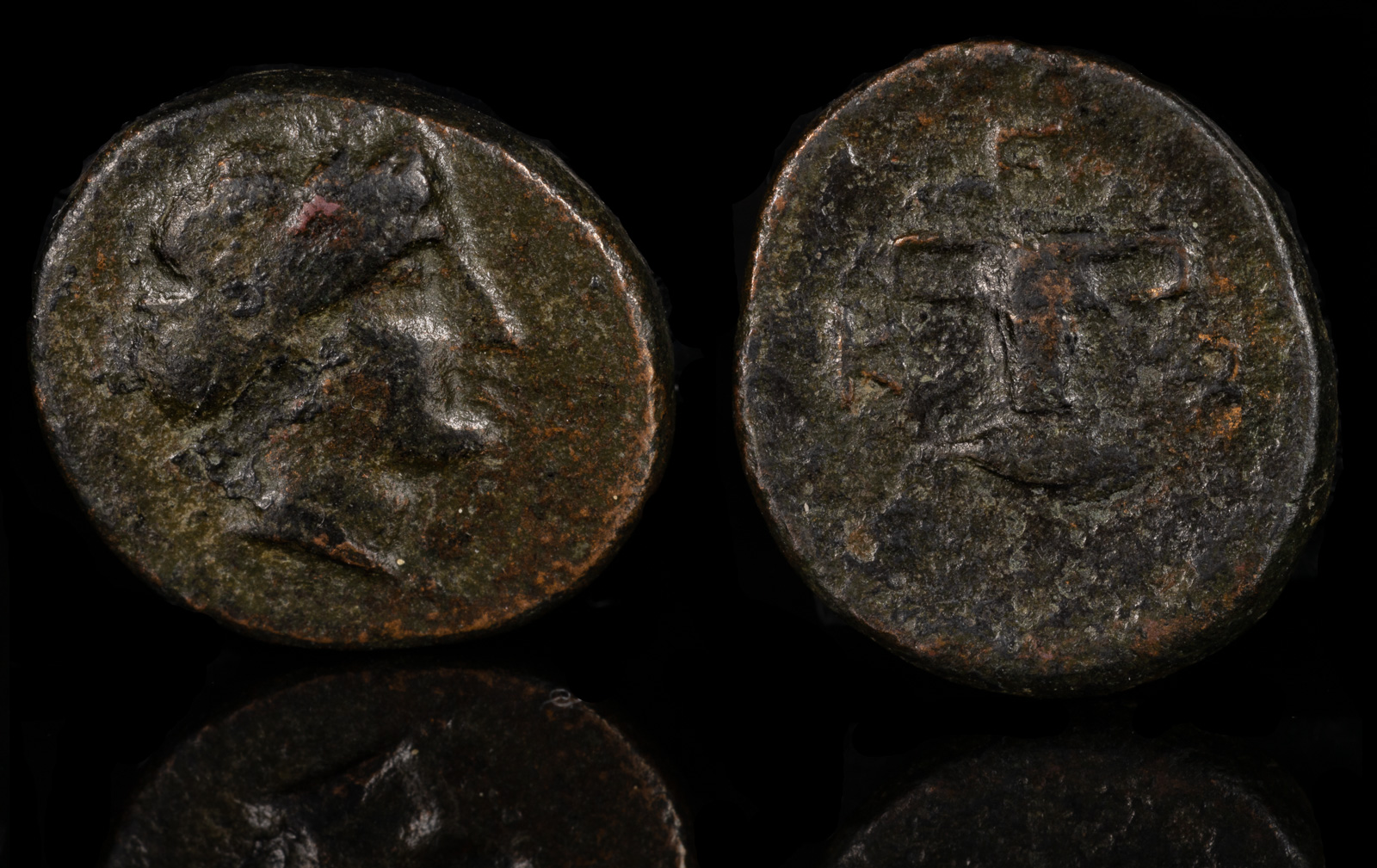
Kersebleptes
AE 14 mm, 1.93 g
Female head right, wearing sphendone. K-E-P; two-handled cup, grain-ear below.
SNG Copenhagen 1070-1
The Odrysian kings are horribly confusing, though they did mint interesting coins. In some form of simplification, Thrace can be said to have had three kings – Kersebleptes, Amatokos II, and Berisades. Confusing things further is some speculation that Berisades was the father of Kersebleptes, though most attribute that to Kotys I. Regardless, Berisades didn’t mint coins, so he wasn’t cool.
So, now we have three kingdoms and three rulers. The next step is to understand that they didn’t like each other. Beyond that, they constantly played a Game of Thrones with Athens and Philip II, who also didn’t like each other.
For most of his rule, Kersebleptes attempted to play Athens, by promising them lands and colonies. This, of course, didn’t play well with Philip II, who invaded them at various times.
In some ways, the Thracian kings were like the Three Stooges with weapons. When Berisades passed away, and Athens and Kersebleptes conspired to seize the territory from his sons, Ketriporis ruined the whole plan by joining Illyria, which upset Philip II and caused him to invade.
Eventually, since Philip had no intentions of letting Thrace stay independent, he conquered all three kingdoms. This enabled him to move on to the cities of Perinthos and Byzantion.
Kersebleptes inherits the Odrysian throne from Kotys I.
Kersebleptes agrees to partition the Odrysian kingdom with Amatokos II and Berisades.
Kersebleptes plots with his brother-in-law Charidemos to eliminate Ketriporis and Amatokos.
Kersebleptes and Philip II plan joint action against Amatokos II. The agreement breaks down, and Kersebleptes allies with Athens and attacks Amatokos II himself.
Philip II attacks and defeats Kersebleptes due to his attack on Amatokos II, who disappears from sources. Teres II seems to take over.